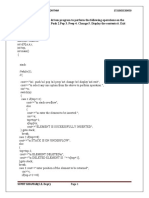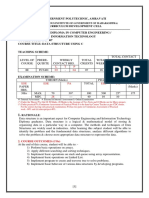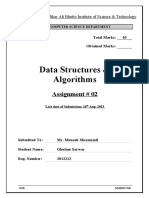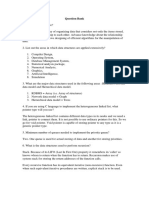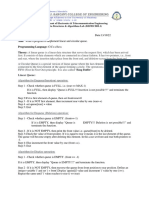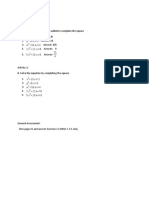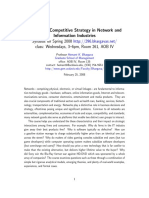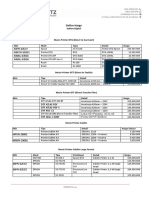0% found this document useful (0 votes)
51 views28 pagesData Structures Lab: List of Exercises
The document provides instructions for several common data structures operations using different data structures like stacks, queues, singly linked lists, doubly linked lists, binary search trees, etc. It includes algorithms for operations like insertion, deletion, traversal, searching, sorting on each of these data structures. The exercises are aimed to help students implement and understand how different data structure operations work in practice.
Uploaded by
Pranav KumarCopyright
© © All Rights Reserved
We take content rights seriously. If you suspect this is your content, claim it here.
Available Formats
Download as PDF, TXT or read online on Scribd
0% found this document useful (0 votes)
51 views28 pagesData Structures Lab: List of Exercises
The document provides instructions for several common data structures operations using different data structures like stacks, queues, singly linked lists, doubly linked lists, binary search trees, etc. It includes algorithms for operations like insertion, deletion, traversal, searching, sorting on each of these data structures. The exercises are aimed to help students implement and understand how different data structure operations work in practice.
Uploaded by
Pranav KumarCopyright
© © All Rights Reserved
We take content rights seriously. If you suspect this is your content, claim it here.
Available Formats
Download as PDF, TXT or read online on Scribd
/ 28


























